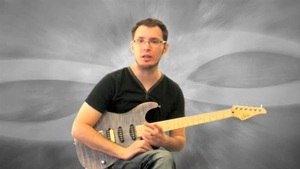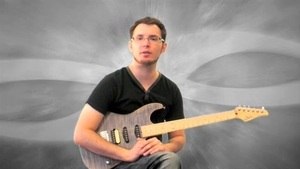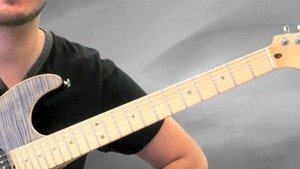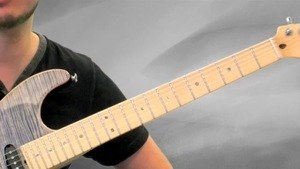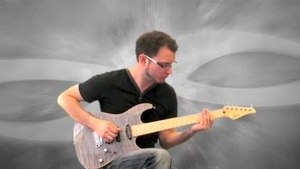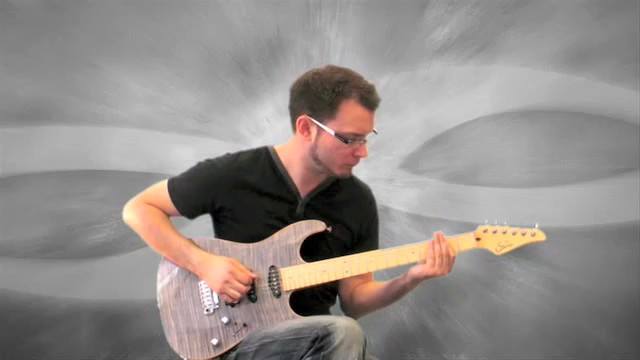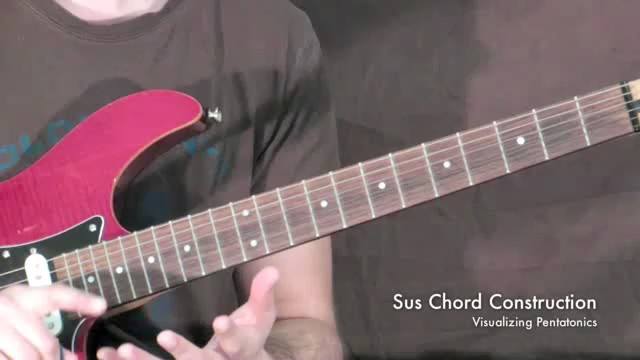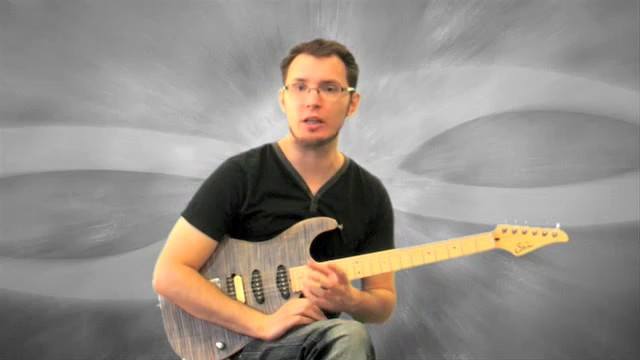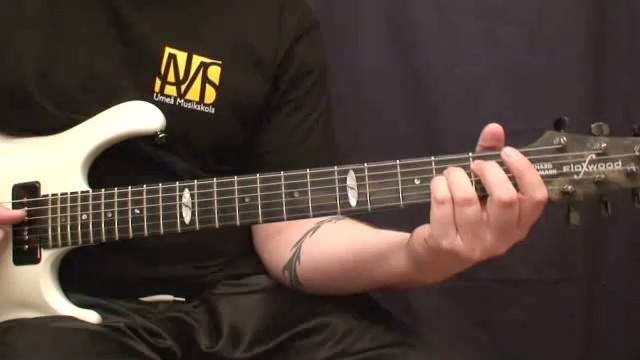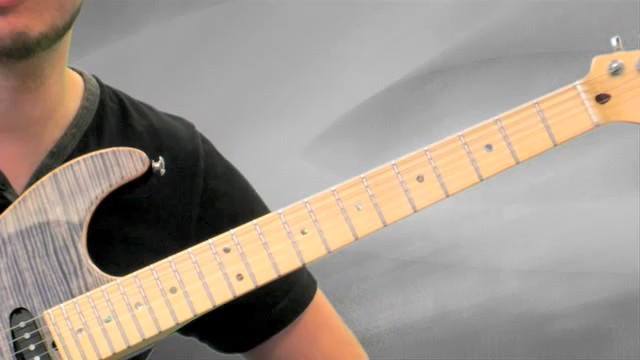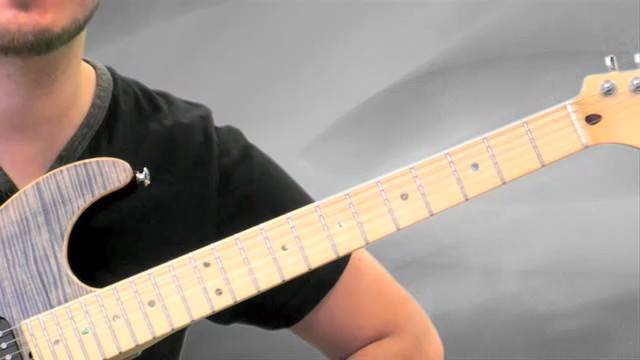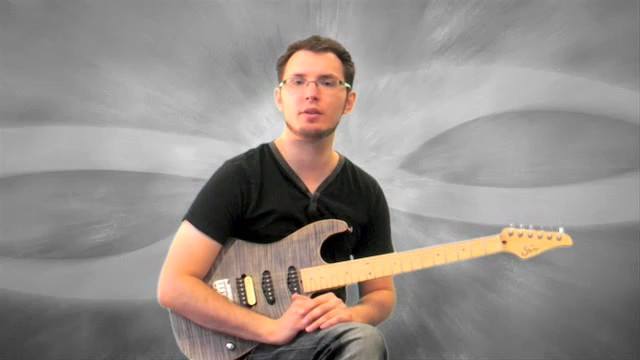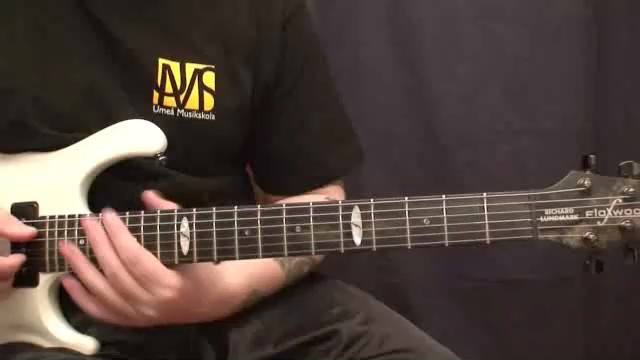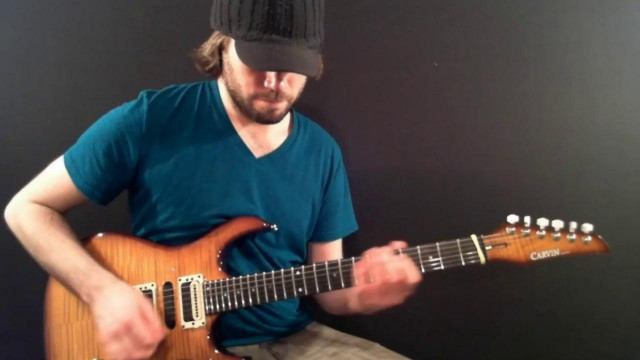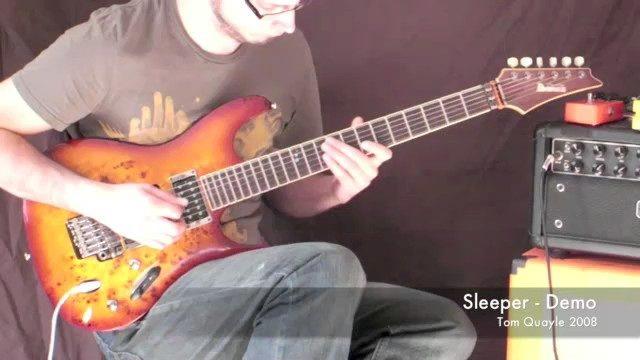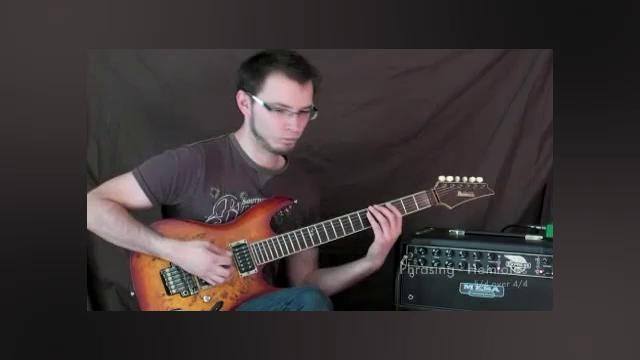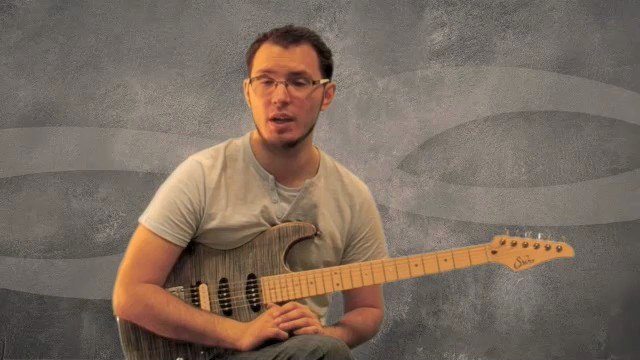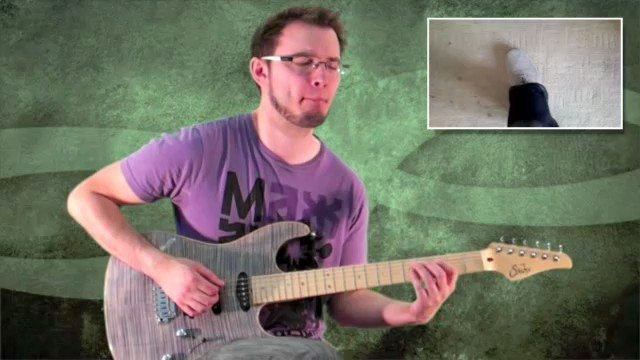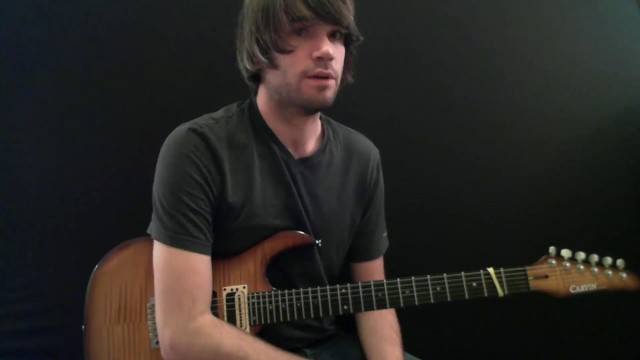Right - now the important bit! You've learnt the shapes but how do you use them?
Well, you'll have noticed that each quartal voicing or shape has a Roman Numeral above it. These refer to one of the seven modes built from a major scale.
The modes run in the following sequence:-
I = Major (Ionian)
II = Dorian
III = Phrygian
IV = Lydian
V = Mixolydian
VI = Aeolian
VII = Locrian
Let's have another look at the shapes on the middle 4 strings for C dorian.

If you wanted to play C dorian you simply get your bass player to play C or a Cminor groove and play these voicings in any order to get the sound of the scale. Dorian is the 2nd mode so our II chord starts on the note C. We then play all the other voicings or shapes in relation to this one. This is why it's really important to learn how each shapes relates visually to all the others.
Lets say you wanted to play over an F dorian groove. Well you'd want to start with the II chord again as Dorian is the 2nd mode but this time it would have to start from the note F in order create F dorian. All the other voicings would then be played in relation to this one. The sequence of shapes is the same, they're just in a different place on the neck.
Now lets say you wanted to play a D Lydian groove. Simple find the IV chord as lydian is the 4th mode and start that shape on the note D (meaning that it's lowest note should be D). If you've got a bass player playing D then you'll hear that all the chords create a D lydian sound. Again the sequence of chords is the same but they start in a different place on the neck.
This takes a little bit of time to get your head round so if you need any help feel free to ask in the forum if there's anything you can't work out. Looking at the top 4 strings you can see that the shapes start on the V chord. However if the bass player is playing C you'll still get the C dorian mode sound. Have a look at the II chord and you'll see it starts on C also on the 10th fret of the D string.

In the next video I'll present a couple of example grooves for you using these shapes. Check out the sound it creates - it's very fusion!!
Next month we'll apply this concept to a chord progression not just a static modal groove!
Enjoy and see you next time.
Tom

